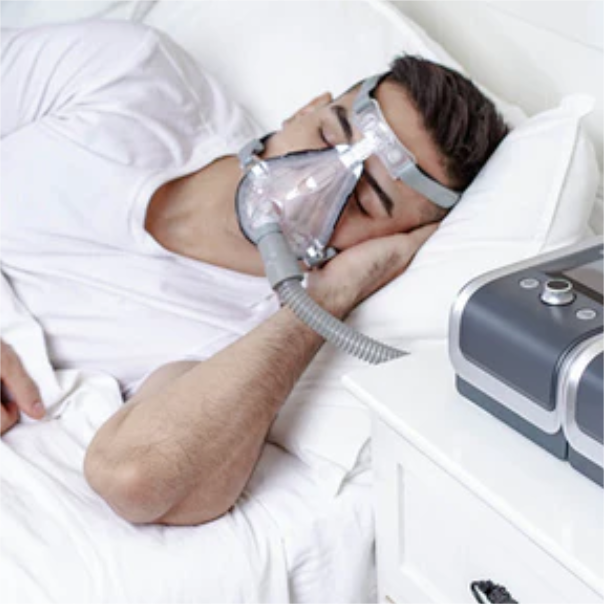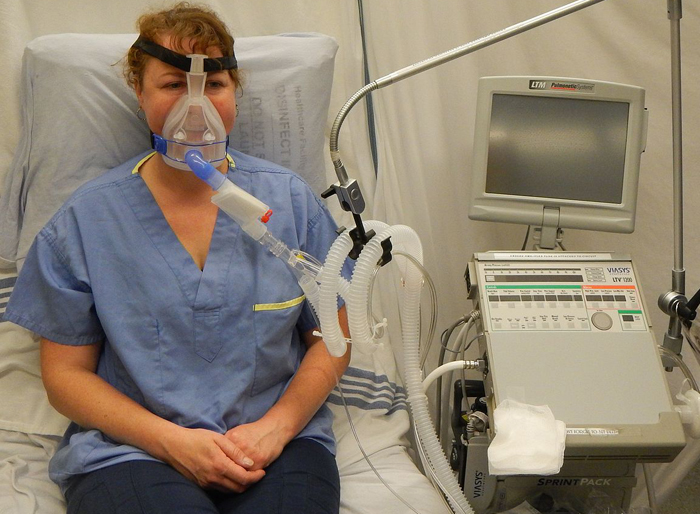BiPAP Rental: A Cost-efficient Different to Acquiring
BiPAP Rental: A Cost-efficient Different to Acquiring
Blog Article
Bipap vs. CPAP: Which Is the very best for Your Sleep Condition?
When browsing the intricacies of sleep conditions, the option in between BiPAP and CPAP therapy is a critical consideration. Each method uses distinct benefits tailored to certain problems, yet the choice hinges on private person demands and convenience levels. While CPAP offers a stable air movement suitable for obstructive rest apnea, BiPAP's dual pressure settings may improve comfort for those with even more detailed respiratory issues. Recognizing these differences can dramatically influence treatment efficacy, leaving one to contemplate which option really aligns with their wellness demands and way of life.
Understanding Rest Disorders
Sleep disorders incorporate a variety of conditions that disrupt typical rest patterns, influencing both the quality and period of remainder. These problems can manifest in numerous forms, including sleeping disorders, sleep apnea, narcolepsy, restless leg syndrome, and parasomnias. Each condition provides distinct obstacles, typically bring about substantial daytime tiredness, cognitive impairment, and psychological disturbances.
Sleeplessness is defined by trouble dropping or remaining asleep, while sleep apnea includes repeated interruptions in breathing during sleep, usually causing fragmented remainder. Narcolepsy, on the various other hand, is marked by too much daytime drowsiness and sudden rest strikes. Agitated leg syndrome creates uncomfortable feelings in the legs, triggering an uncontrollable urge to move them, which can likewise hinder the capacity to drop off to sleep.
The effect of rest disorders expands beyond private wellness, affecting total productivity, relationships, and lifestyle. Recognizing the particular nature of each condition is critical for effective diagnosis and treatment. As rest health and wellness ends up being significantly recognized as a crucial element of overall wellness, dealing with these disorders is vital for improving both sleep quality and everyday performance.
How CPAP Functions
Continual Favorable Air Passage Pressure (CPAP) therapy is frequently employed as a primary therapy for obstructive rest apnea (OSA) The system of CPAP involves making use of a maker that supplies a consistent stream of air with a mask used during rest. This air flow maintains favorable pressure in the airway, protecting against the collapse or blockage of the throat that can occur throughout sleep.
When a patient breathes in, the CPAP machine supplies a continuous circulation of air, making sure that the airway continues to be open - BiPAP Rental. This not only reduces the signs and symptoms of OSA, such as snoring and interrupted sleep patterns, however also minimizes the involved wellness dangers, consisting of cardiovascular difficulties and daytime tiredness
The stress setups on a CPAP device can be personalized to meet private client needs, commonly determined through a rest study. Generally, CPAP therapy has actually been revealed to dramatically improve the high quality of rest and overall wellness for people enduring from obstructive rest apnea.
How BiPAP Works
BiPAP, or Bilevel Favorable Air Passage Stress, is a customized kind of non-invasive air flow that is specifically useful for patients with conditions such as complex rest apnea or respiratory disorders. Unlike CPAP, which supplies a continual stream of air at a single pressure, BiPAP offers two distinct stress settings: a higher inspiratory stress for breathing and a lower expiratory stress for exhalation. This dual-pressure approach allows for less complicated breathing, reducing the effort needed during exhalation.
The tool runs with a mask fitted over the nose or mouth, attached to a device that generates air stress. When the client inhales, the device provides the greater pressure to help with air flow, making certain that the respiratory tract stays open. Upon exhalation, the device immediately reduces the pressure, making it more comfortable for the patient to breathe out.

Secret Differences In Between BiPAP and CPAP

On the other hand, BiPAP (Bilevel Favorable Respiratory tract Pressure) provides two different pressure settings: one for breathing and a lower one for exhalation. This dual pressure system permits even more comfortable breathing, specifically for patients who battle with exhaling versus a continual pressure. BiPAP is often advised for patients with complex rest apnea, chronic obstructive lung illness (COPD), or those who need additional support throughout sleep.
Additionally, the intricacy of BiPAP devices commonly leads to a higher cost and requires more mindful titration than CPAP. BiPAP Rental. Recognizing these key distinctions can aid in acknowledging which device might be extra ideal for particular rest disorders, setting the foundation for informed treatment decisions
Choosing the Right Treatment
The choice in between BiPAP read this and CPAP treatment largely hinges on the details qualities of the rest problem, the patient's general health and wellness, and their comfort with the tool. CPAP, which supplies a continuous stream of air, is commonly suggested for obstructive rest apnea (OSA)
Conversely, BiPAP provides 2 degrees of stress: one for inhalation and a lower one for exhalation. This double stress system is valuable for clients with intricate rest apnea or those that experience trouble exhaling versus a continual pressure. In addition, BiPAP is frequently recommended for people with breathing conditions, such as persistent obstructive lung condition (COPD), where varying stress setups can enhance convenience and conformity.
Inevitably, a complete assessment by a sleep specialist, consisting of a sleep research study, can assist determine which treatment lines up ideal with the individual's needs. Elements such as convenience, simplicity of use, and details medical conditions must additionally be thought about to optimize treatment results.
Final Thought
In recap, both BiPAP and CPAP serve unique purposes in the administration of sleep problems. CPAP works for obstructive rest apnea with consistent air flow, while BiPAP offers dual pressure settings that boost convenience for those with intricate sleep apnea or respiratory system issues. The selection between these therapies ought to navigate here be directed by private needs and conditions, demanding a thorough analysis by a sleep expert to guarantee optimal treatment outcomes and enhanced high quality of sleep.

In general, CPAP therapy has actually been shown to substantially enhance the high quality of rest and total wellness for individuals experiencing from obstructive sleep apnea.
BiPAP is usually advised for clients with complex sleep apnea, persistent obstructive lung illness (COPD), or those that need added support during sleep.
CPAP is efficient for obstructive sleep apnea via regular airflow, while BiPAP uses twin stress settings that boost convenience for those with complex rest apnea or breathing issues.
Report this page